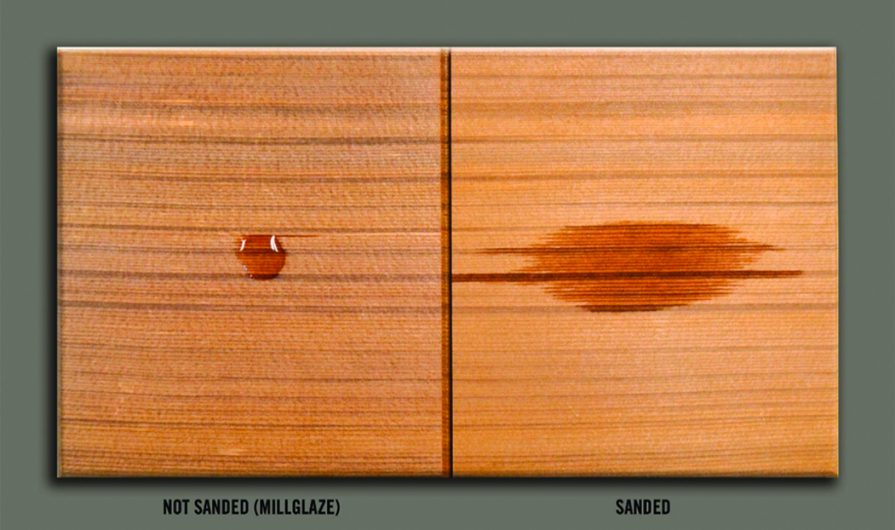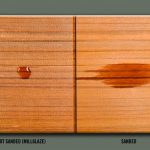Sansin’s managing director answers some common questions.
Too often, building maintenance – especially where the coating is concerned – is not a consideration during the design phase of a project. But there are many reasons why maintenance of the coating on a wood structure should be considered early in the process. In fact, starting with maintenance in mind will help ensure the enduring beauty and protection of a wood structure that keeps it looking as good as it did on day one.
Sjoerd Bos, Managing Director of Sansin Corporation, has been involved in the maintenance of large, wood commercial structures throughout Europe and North America for the past three decades. As a result, he has fielded many questions regarding maintenance expectations. Mr. Bos believes that the building owner is best served when the right questions are asked to ensure the expectations for wood maintenance are realistic and in line with the exposure, wood type and other factors.
Q: Why should architects and builders consider maintenance when selecting an architectural finish?
A: As the use of wood grows, there is increasing expectation of performance over time. It is not enough for the building to just look good at the grand opening. This is why we always counsel architects and builders to develop a coating system with maintenance in mind. Certainly, beauty is one aspect of the project, but how the wood substrates will perform are contingent on exposure to UV and moisture, the color of the finish, the design of the building and the quality of the wood, to name a few. Our goal is to support the architect’s vision of the building design, but also offer advice around how design decisions impact durability and ease of maintenance.
Q: How does one budget for maintenance?
A: We recommend that the budget for maintenance be part of the specification and accounted for in the design phase. We have seen a trend – especially in Europe – where a maintenance schedule and budget will be decided upon before the building is inhabited. For example, a very large commercial cedar building was erected in Northern Europe that used Sansin SDF on the exterior; this building included a 30-year maintenance program in which our SDF product would be applied at an agreed-upon interval that ensured the maintenance coat was applied proactively.
Q: What should designers consider when selecting a coating product to extend the maintenance cycle?
A: The goal is to find a suitable wood finish. Water-borne finishes – those that penetrate the wood rather than sitting on top of it – enable the product and pigment to penetrate into the wood fiber. Also, one should consider a finish that doesn’t alter the transparency when maintained.
One must often balance durability with the desire for lasting natural aesthetics. Often to achieve a desired look, the coating may require special treatments so that the appearance is balanced with strong enough UV protection to extend the maintenance cycle. Not surprisingly, less transparent or darker colors are going to offer a longer maintenance cycle than a one-coat, clear system.
Additionally, we recommend undercoats, especially for large buildings, as a way to protect wood in transit from the factory and at the construction site. One never knows what might hold up construction, and an undercoat will protect the wood from UV degradation and water absorption especially at the end grain. Our water-borne undercoats are also recoatable, which is conducive to more uniform top-coating and easier maintenance.
Q: How are coating decisions different for different types of wood (eg. engineered wood products versus Western Red Cedar?)
A: Different wood species have different innate characteristics that impact coating decisions. Some, like maple, are naturally light while others have large knots. Some, like cedar, have contrasting colors because of variations in sapwood and hardwood. Ipe has an inherently darker color. Some modified woods require more protection than others. This is why, when we work with architects, our first question is about the wood species that will be used on the project. In many cases, a specific wood product may not be suitable for the exposure. When given the opportunity, Sansin can offer advice.
Q: What are best practices for ensuring quality control during application?
A: First, for large projects, we strongly recommend that at least the first one or two coats of product be applied in a factory-controlled setting – or in a setting that can attain a certain level of temperature and humidity control. Ambient air temperatures have a significant impact on drying time and proper curing.
Further, it goes without saying – but we often have to reinforce this point – the product must be applied in accordance with published preparation and application procedures as stated in the product data sheets. All manufacturers should provide these documents to guide application.
Other best practices for a longer maintenance interval are to apply product to all six sides of a properly sanded and prepared wood surface, and then applying the proper dosage of product, achieving what we call the “recommended mil thickness” for each coat. This mil thickness should be recorded and kept on file for any warranty considerations, along with a control sample. Sanding, correct dosage, even application of the product to all sides, and proper drying and storage are the fundamentals of wood finishing for long-term success.
On the job site, if the wood has been damaged in transit, the contractor should take the necessary steps to repair the damage and reapply the coating. Any ends cut on the jobsite must be coated, as the unsealed end grain is most susceptible to moisture intrusion.
Q: What are the biggest application mistakes builders make that impact maintenance cycles?
A: Builders need to be concerned about the care of the wood at the building site. That means no contact with wet soil, wraps that don’t allow water to get inside and pool, and being careful about moving the wood around on the construction site to prevent damage. In short, you want to limit the wear and tear on the wood at the building site. That’s why we recommend that at least an undercoat be applied – preferably in a factory-controlled setting – before the wood gets to the site.
Additionally, preparation is key. Often, wood needs to be sanded to open the pores so that the finish penetrates into the wood evenly. Some may want to take shortcuts on sanding, but this can be costly for the building owner. Sanding right before the first coat, especially, is the critical first step to ensure the finish goes on consistently, penetrates well and helps ensure overall success of the project. Using proper equipment to sand evenly at the right grit is imperative to quality and productivity.
Q: What is the expected longevity of coating performance, and what are the contributing factors?
A: There are many factors that contribute to the longevity of a coating. Durability and maintenance cycles are impacted by wood quality, exposure and condition, surface preparation, workmanship, storage conditions and design or landscaping, to name just a few.
Q: Understanding that maintenance is part of the life cycle of the wood finish, when and how often should maintenance be conducted for optimum performance and color retention? Are there any special steps for prepping the surface for maintenance versus prepping it for initial coating?
A: When approaching the expected maintenance time, we recommend examining the surface every six months to check on the coating, because proactively identifying areas that require attention is key to easy maintenance. Also, wood features often do not wear evenly. Different sides of a building could be exposed to different elements that can impact the coating performance. For instance, a side that is exposed to sea air or an inordinate amount of sun may need more frequent maintenance than a side that is shaded. You want to catch worn areas early so you can simply wash and apply a protective top coat to safeguard a more vulnerable area. If you let it go past the point of maintenance and the wear gets through to exposed wood, the maintenance process will be more arduous.








